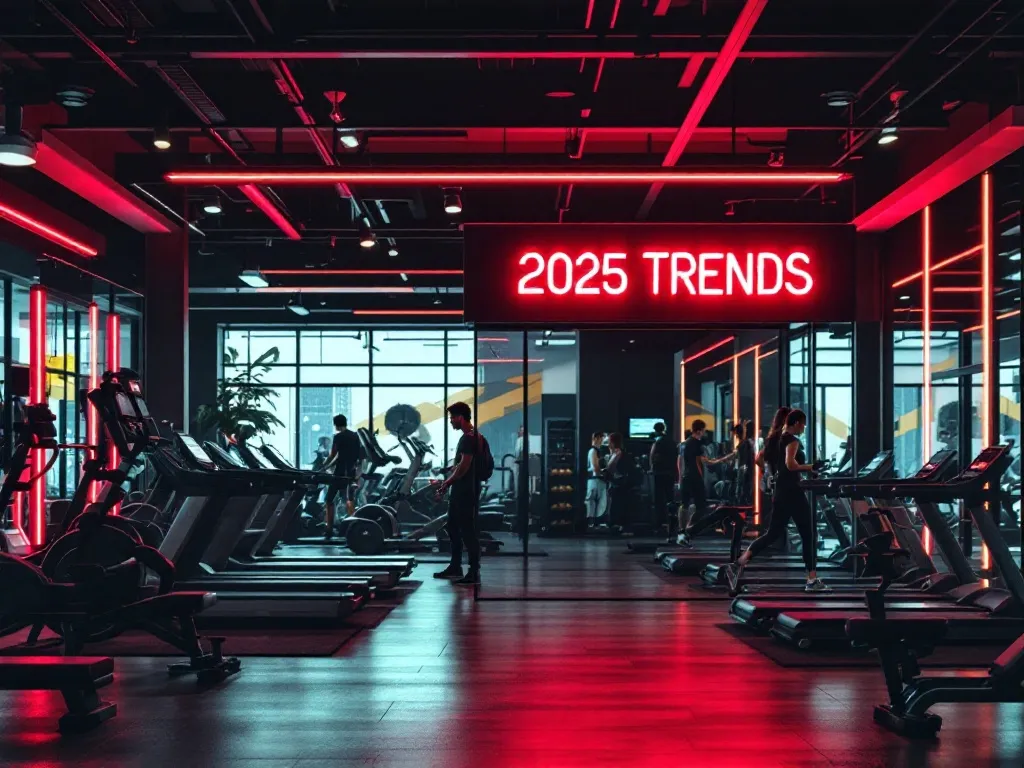The fitness industry is experiencing an unprecedented transformation, blending cutting-edge technology with evidence-based training methodologies. This comprehensive analysis explores the most impactful trends and provides actionable implementation strategies.
Smart Strength Training
Artificial Intelligence Integration
The marriage of AI and strength training has revolutionized workout optimization. Advanced algorithms now analyze movement patterns, suggest real-time corrections, and adjust training loads based on daily readiness scores.
Velocity-Based Training (VBT)
Smart racks and barbells measure movement velocity to optimize training intensity:
- Concentric velocity tracking
- Force production analysis
- Power output optimization
- Fatigue management protocols
Hybrid Performance Systems
Strength-Endurance Integration
Modern programs combine traditional strength work with metabolic conditioning:
# Weekly Training Split
Monday: Heavy compound lifts + Zone 2 cardio
Tuesday: Upper body velocity training
Wednesday: Metabolic conditioning
Thursday: Lower body power development
Friday: Technical skill work
Saturday: Active recovery + mobility
Sunday: Complete rest
Neuromuscular Focus
Training now emphasizes neural adaptation alongside muscular development:
| Training Phase | Focus Area | Duration |
|---|---|---|
| Activation | Neural primers | 10-15 min |
| Power | Speed-strength | 20-30 min |
| Strength | Main lifts | 30-40 min |
| Volume | Accessory work | 20-30 min |
Advanced Training Protocols
Foundational Strength Program
Week 1-4 Progressive Loading:
Block 1: Neural Adaptation
- Smart rack squats: 5x3 @75-80% 1RM
- Velocity tracked deadlifts: 4x4 @70-75% 1RM
- AI-monitored bench press: 4x5 @72-77% 1RM
- Biometric feedback rest periods
Power Development Phase
Block 2: Force Production
- Jump squats with force plate feedback: 4x3
- Band-assisted power cleans: 5x2
- Reactive plyometrics: 3x5
- Neural drive assessment between sets
Metabolic Optimization
Zone-Based Training Integration
Modern programs utilize precise heart rate zones:
- Zone 1 (Recovery): 60-70% max HR
- Zone 2 (Foundation): 70-80% max HR
- Zone 3 (Tempo): 80-87% max HR
- Zone 4 (Threshold): 87-92% max HR
- Zone 5 (Maximum): 92-100% max HR
Recovery Innovation
Biometric-Driven Recovery
Advanced wearables now track:
- Heart rate variability (HRV)
- Sleep architecture
- Nervous system readiness
- Cellular recovery markers
Implementation Strategy
Phase 1: Foundation (Weeks 1-4)
Monday: Movement Pattern Development
- AI-guided squat assessment: 3x8
- Smart rack bench press: 3x10
- Tracked Romanian deadlifts: 3x12
- Biometric feedback rest periods
Wednesday: Strength Development
- Velocity-based front squats: 4x6
- Overhead press: 4x8
- Pull-ups: 3x6-8
- Recovery metrics monitoring
Friday: Power Integration
- Jump squats: 4x3
- Medicine ball throws: 3x5
- Box jumps: 4x4
- Neural fatigue tracking
Phase 2: Progressive Loading (Weeks 5-8)
Monday: Strength Focus
- Back squat: 5x5 @80% 1RM
- Bench press: 4x6 @75% 1RM
- Barbell row: 4x8 @70% 1RM
- Real-time force production analysis
Wednesday: Power Development
- Clean pulls: 5x3
- Push press: 4x4
- Weighted pull-ups: 4x5
- Velocity tracking on all sets
Friday: Volume Work
- Front squat: 3x8
- Incline press: 3x10
- Deadlift variations: 3x8
- Fatigue monitoring system
Advanced Implementation
Neural Priming Protocol
Pre-workout activation sequence:
- CNS activation drills
- Movement pattern primers
- Reactive strength index testing
- Readiness score assessment
Progressive Overload System
Intelligent load management based on:
- Daily readiness scores
- Previous performance metrics
- Recovery status
- Neural fatigue indicators
Optimization Strategies
Performance Tracking
Key metrics to monitor:
- Force-velocity profiles
- Power output curves
- Movement efficiency scores
- Recovery indicators
Adaptation Monitoring
Regular assessment of:
- Strength development
- Power production
- Movement quality
- Recovery capacity
This comprehensive approach represents the cutting edge of strength training methodology, combining traditional principles with modern technology and scientific understanding. The key to success lies in systematic implementation and consistent progression based on objective data and subjective feedback.
Remember to start conservatively and progress based on your body's response to the training stimulus. Regular reassessment and program adjustment ensure optimal results while minimizing injury risk.














